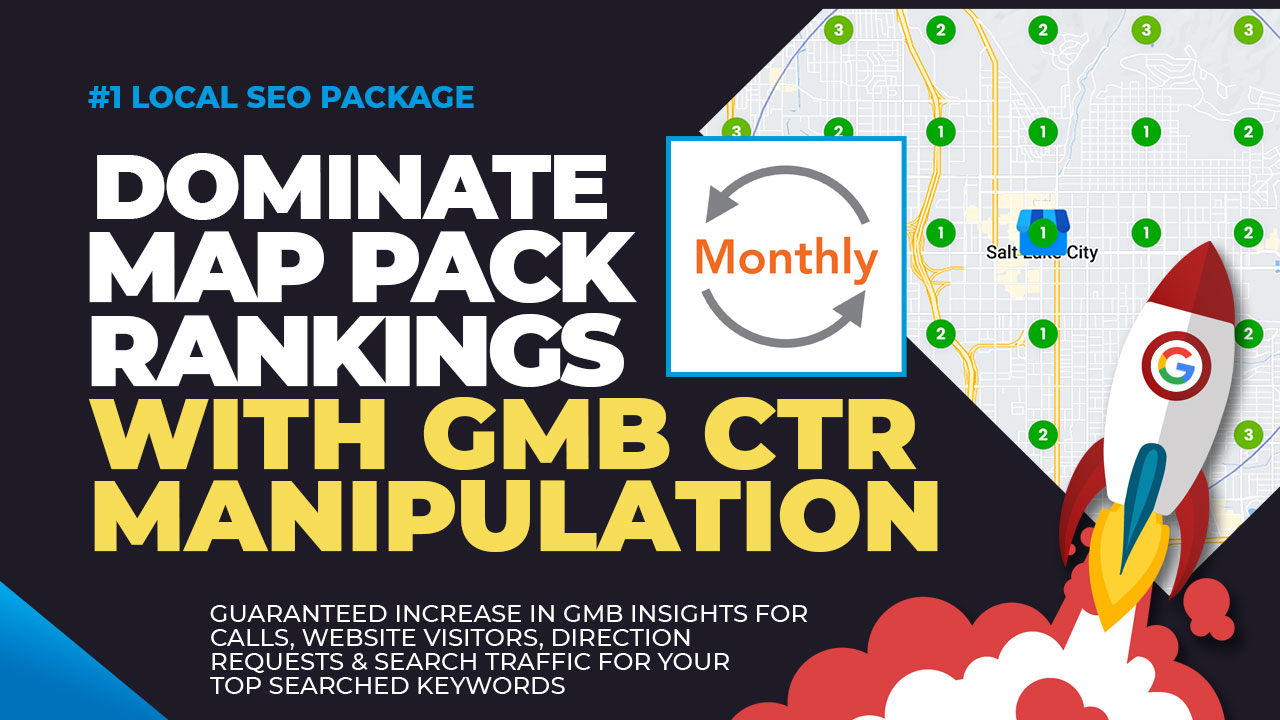Exactly How to Determine the Impact of CTR Control on Your Marketing
Comprehending the subtleties of click-through rate (CTR) control in advertising is vital for businesses making every effort for real user involvement. By checking out vital metrics such as conversion prices and bounce rates, marketing professionals can reveal possible inconsistencies that might emerge from synthetic enhancements.
Understanding CTR Adjustment
Recognizing CTR control is essential for marketing experts seeking to maximize their campaigns and make sure information stability. Click-through price (CTR) refers to the ratio of customers who click on a details web link to the total number of individuals that see the advertisement or web content.
The effects of CTR manipulation expand beyond simple information distortion; they can undermine count on digital advertising and marketing. When organizations count on inflated metrics, they might purchase ineffective projects, eventually hurting their roi. In addition, platforms may punish advertisers involving in such methods, causing more implications for their advertising and marketing efforts.
To effectively battle CTR adjustment, online marketers must create an extensive understanding of their information resources and analytics tools. By using innovative monitoring methods and inspecting web traffic sources, they can guarantee and recognize irregular patterns that their efficiency metrics reflect authentic user interaction - CTR Manipulation Press Release. This vigilance is crucial for fostering lasting success in an increasingly competitive electronic landscape
Trick Metrics to Examine
Efficient evaluation of essential metrics is critical for examining the true efficiency of advertising and marketing projects and finding potential CTR manipulation. One primary statistics to consider is the Click-Through Rate (CTR) itself, which represents the proportion of customers who click an advertisement to the total variety of individuals who view it. A sudden spike in CTR may indicate manipulation, necessitating further examination.
Additionally, checking conversion prices is necessary. A high CTR with a reduced conversion price can signify that the clicks are not genuine or that the targeting is misaligned (GMB CTR Manipulation). In a similar way, analyzing bounce prices can give understanding right into customer engagement; a high bounce rate after a click may suggest that the web traffic is not quality-driven.

Tools for Dimension

In addition, A/B screening tools such as Optimizely or VWO can assist in experimentation with different advertisement variations to determine which aspects drive greater CTR. These tools enable marketers to examine real-time efficiency and make data-driven adjustments. Social network analytics tools, like Hootsuite or Sprout Social, can likewise contribute in comprehending CTR within social platforms, providing understandings right into target market behavior and involvement fads.
Furthermore, warm mapping tools, such as Hotjar, can expose exactly how users interact with advertisements, aiding to identify where improvements can be made. Combining these tools produces a robust measurement structure, enabling marketing experts to determine the impacts of CTR adjustment effectively. Ultimately, the appropriate selection of dimension tools is essential for making notified advertising decisions and optimizing campaign efficiency.

Examining Long-term Impacts
One need to take into consideration the long-lasting effects of CTR adjustment on total advertising and marketing performance, as temporary gains can commonly mask deeper implications. Over time, unnaturally blew up click-through prices might lead to diminished trust from customers and search engines alike. When customers consistently run into deceptive techniques, they might come to be hesitant to involve with the brand, causing reduced conversion prices in the future.
Furthermore, formula updates from platforms such as Google are developed to prioritize real interaction over filled with air metrics. Companies that depend on CTR manipulation may discover themselves punished, leading to a decrease in organic reach and visibility. This can have a cascading result on brand name reliability and customer commitment, inevitably undermining the extremely goals that the initial manipulation looked for to accomplish.
Moreover, the information accumulated from adjusted CTR might misguide online marketers in their method advancement. Counting on manipulated information can cause illinformed projects that stop working to resonate with the target audience, bring about thrown away resources and missed opportunities. It is important for online marketers to evaluate the long-term implications of CTR adjustment and focus on sustainable, honest engagement methods for lasting success.
Honest Considerations in CTR Adjustment
In the world of digital advertising, moral factors to consider surrounding CTR manipulation are paramount. While the need to enhance click-through prices (CTR) can result in short-term gains, the potential long-term consequences on brand honesty and consumer trust can not be ignored. Manipulating CTR usually includes methods that may misguide customers, such as clickbait headings or misleading advertising and marketing practices. These strategies can cause a transient increase in traffic yet might ultimately deteriorate client self-confidence.
Furthermore, honest concerns encompass compliance with policies such as the Federal Profession Payment (FTC) standards, which mandate transparency in advertising and marketing. Falling short to comply with these criteria can expose organizations to legal ramifications and damage their reputation. Marketers need to take into consideration the implications of their techniques on user experience and the wider market landscape.
Additionally, the surge of artificial intelligence and automation in advertising presents more honest problems. Ultimately, moral advertising techniques must focus on transparency, honesty, and respect for the consumer, promoting long-term partnerships that transcend simple metrics like CTR.
Verdict
In verdict, measuring the effect of CTR adjustment on advertising calls for an extensive analysis of vital metrics, including click-through prices, conversion rates, and bounce prices. Eventually, a data-driven strategy guarantees that advertising and marketing techniques are reliable and aligned with authentic user interactions.
Understanding the nuances of click-through rate (CTR) adjustment in marketing is crucial for services striving for authentic customer engagement.Reliable evaluation of essential metrics is essential for assessing the real performance of advertising projects and spotting prospective CTR adjustment.One should think about the lasting effects of CTR control on total advertising and marketing performance, as short-term gains can often mask deeper ramifications.In the world of electronic marketing, honest considerations surrounding CTR GMB CTR Manipulation control are vital.In verdict, gauging the impact of CTR adjustment on marketing requires an extensive analysis of key metrics, including click-through rates, conversion prices, and bounce prices.